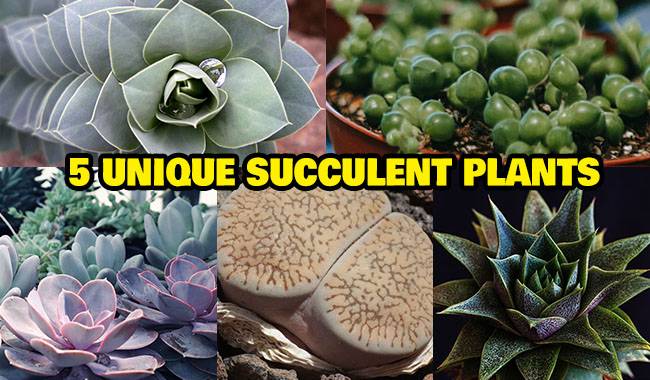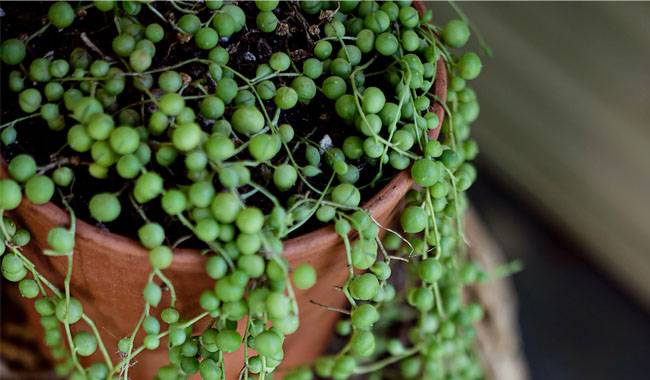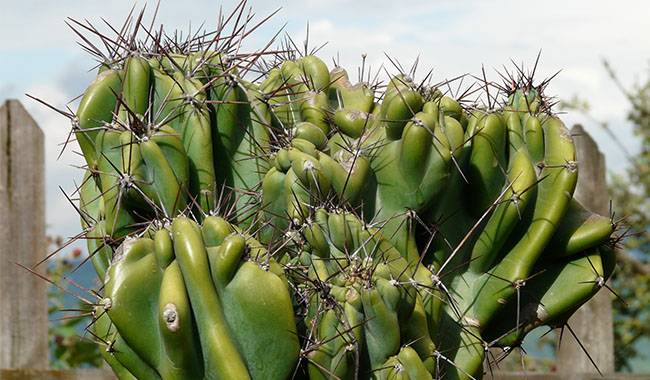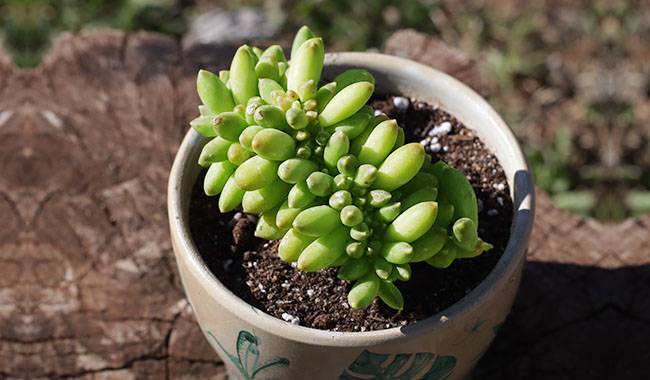
Sedum succulent is a large genus of flowering plants in the family Cruciferae, whose members are often referred to as Staphylinia. The genus includes about 600 species, which were later reduced to 400-500 species. It is a low-growing shrub, succulent and herbaceous plant that can be perennial, annual, or biennial. Under natural conditions, it can be found in the Northern Hemisphere, more specifically in temperate regions of Europe, Asia, and North America. The name of the genus comes from the word “stone” because the main characteristic of this plant is its ability to grow on almost all stony surfaces. Well-known European plants of the genus Sedum include Sedum acre, Sedum album, Sedum dasyphyllum, Sedum reflexum (also known as Sedum rupestre), and Sedum hispanicum. These plants have water-storing leaves. The flowers usually have five petals, rarely four or six. There are generally twice as many stamens as petals. Various species formerly classified as the Sedum family are now grouped into two separate genera, Hylotelephium and Rhodiola.
To grow at home, most often choose the type of plant in the Sedum genus represented by succulents. Such flowers require special care: moderate watering, occasional fertilization with special fertilizers, and the provision of sufficient sunlight and heat. For a homegrown shrub to bloom, a lot of effort is required from the florist: it should be placed in a cold enough place in winter, while the air temperature should be kept high in summer. Most Sedum species can be grown as waterless plants if desired. In natural conditions, they most often grow on steep cliffs or rocks from which they hang down.
Not only is it very showy, but it also has medicinal uses. For example, in alternative medicine, its leaves treat burns and as a wound-healing substance. Sedum extract is also used as a biostimulant in cases where aloe vera is recommended. This plant is also known as a herb for hernia and feverfew, as well as oleander.
SEDUM’S CHARACTERISTICS
BRIEF INSTRUCTIONS FOR CULTIVATING SEDUM
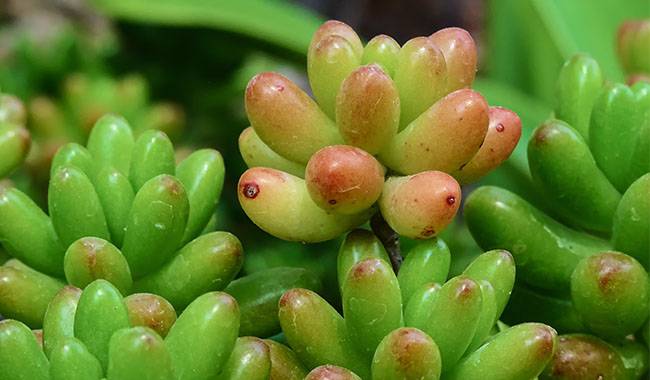
- Flowering. Sedum is cultivated as an ornamental deciduous plant.
- Brightness. It needs bright sunlight.
- Temperature. In spring and summer: 75-82 °F (24-28 °C). In cooler periods: 46-53 °F (8-12°C).
- Watering. During intensive growth, it is necessary to water moderately and after the soil in the pot has dried to half its depth. From November to February, watering should be very sparing and economical, but make sure that the soil in the pots does not dry out completely.
- Moisture. Any moisture can be used.
- Fertilizer. Feed the bush from spring until fall, once every 4 weeks, using a mineral fertilizer compound for cacti and succulents.
- Dormant period. Around November or February.
- Transplanting. Transplant Sedum regardless of the season, young bushes – once every 2 years, adults – once every 3 or 4 years.
- Soil. You can use prepared succulent substrate or make your soil mixture by combining turf and foliage soil and sand with charcoal and fine gram rock.
- Propagation. Seed method and cuttings.
- Harmful insects. Rootworm.
- Diseases. Rotting of roots and shoots, stretching and flaking of stems, puckering of leaf plates. All these problems occur most often when the plant is not properly cared for.
- Properties. sedum grass contains a toxic substance.
HOW TO TAKE CARE OF SEDUM PLANTS AT HOME
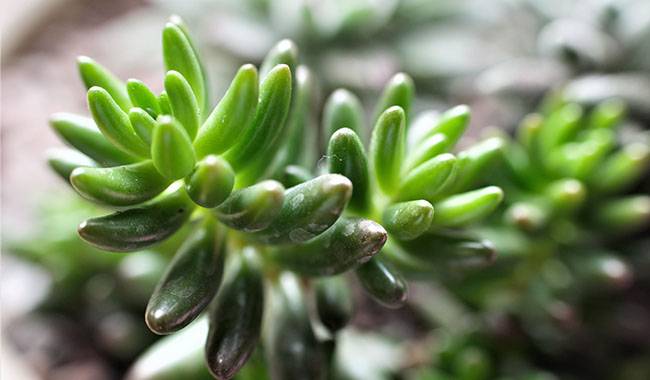
Brightness
When growing Sedum in indoor conditions, it needs plenty of light throughout the year to grow and develop properly. Direct sunlight is very beneficial for this crop, so it is best to place the shrub on a south-facing windowsill. This flower can also be placed in an east- or west-facing window, but make sure other plants or curtains do not block it. Experts do not recommend choosing a north-facing windowsill for Sedum because the lack of light can negatively affect its decorative qualities. The fact is that the lack of light causes the stems to stretch strongly. In winter, the shrub needs sunlight during the winter.
Temperature
Such a plant grows in domestic conditions and can withstand a wide range of air temperatures. However, for it to develop within a certain range, it is recommended to maintain a sufficiently high temperature of 75-82 °F (24-28 °C) during the warm season. It is recommended to keep the shrub on the coldest windowsills in winter, as it needs temperatures of 46-53 °F (8-12 °C) during these months. If it stays in a warm place during the winter, the stems will grow significantly longer, which can have a particularly negative effect on the plant’s appearance. Do not forget to ventilate the room where Sedum is placed regularly.
Watering
During vigorous growth, it needs moderate watering, but it should be done systematically, as the substrate in the pot should not dry out to more than half its depth. From September onwards, it needs less watering and during the rest period (November to February) it should be watered sparingly, but making sure that the substrate in the pot does not dry out completely. When watering this plant, remember that drought is less harmful than stagnant liquids.
Humidity
The humidity level in the room is not important for Sedum. It can be very high or low. You can moisten the foliage with a sprayer or wipe it with a moist sponge. This is just to remove dust from the foliage. There is no need to increase humidity specifically.
Fertilization
Sedum flowers should be fertilized from the first days of spring until early autumn. This should be done every 4 weeks with the help of a special cactus fertilizer (check the fertilizer concentration instructions). It does not need any fertilizer from the beginning of autumn until the last days of the dormant period.
Transplanting Sedum
Sedum flowers need to be replanted regularly. When the bushes are young, they should be replanted every few years, while mature bushes should be replanted every 3 or 4 years. Replanting should be done with great care, as the leaves of the bush are very brittle and can be easily broken, and bald spots on the stems can greatly damage the appearance of the flowers.
This plant is very tolerant of transplanting, so flowering shrubs can be transplanted if necessary. A low container should be chosen, as the flowers have a small root system. Make a good drainage layer in the bottom and use expanded clay pebbles for this purpose. The transplanting soil should consist of leaf and sod soil and sand (1:1:1) and mixed with small pieces of charcoal and bricks. You can also buy ready-made potting soil for succulents.
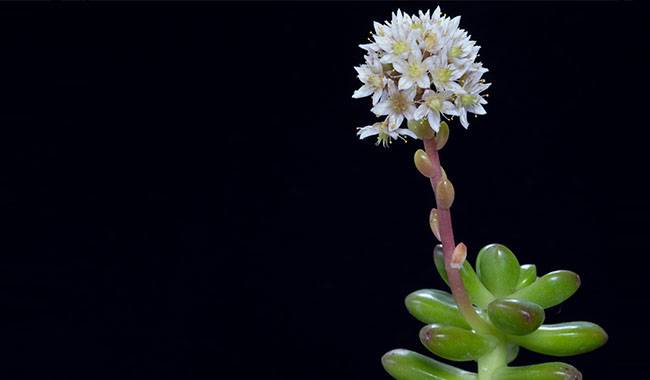
COMMON PROBLEMS OF SEDUM
- Bare stems. This can occur for a variety of reasons. The most common cause is poor lighting, in which case the stems are pulled out, which is extremely detrimental to its decorative qualities. It may also be caused by mechanical damage, such as broken leaves.
- Rotting of the root system. This may be caused by overwatering during the cold winter months. In this case, reduced watering will help, or the shrub can be renewed by taking cuttings.
- The leaves of Sedum become dry. A lack of water causes this. The leaves may also be crumpled. Remember that the soil in the pot should not become dry. If this happens, water as soon as possible, and the leaves will soon regain their fertility.
- The stems of Sedum stretch out. This may be caused by too little light, for example, when the flower is placed on a north-facing windowsill or in a shady place. Such a plant needs very bright light, as well as some direct sunlight.
- Pests and diseases of Sedum. If not properly cared for, rot or rootworm settling can occur.
SEDUM PROPAGATION METHODS
Propagation of Sedum flowers by cuttings
Cuttings are used to propagate Sedum at home. The cuttings can be leaf and stem cuttings. It is recommended that rooted cuttings be planted immediately after taking the cuttings. Stem cuttings should be planted in a loose and moderately light soil mixture, e.g., turf and leaf soil can be combined with sand (4:2:1). Use low, wide pots that do not cover the cuttings from above. They should root in about 2-3 weeks, and when planted in another 15-20 days, they can be planted in individual containers which should be filled with sand, turf, and leaf soil (1:1:1). The leaf cuttings will be rooted in the sand and then planted in the same potting soil as the stem cuttings. The room where the cuttings are placed should be regularly ventilated.
Seed propagation of Sedum
This flower can be propagated from seed in spring or fall. Use pots or low boxes for sowing. To make the seedlings emerge faster, you should place them in a greenhouse. Once the seedlings have formed their second or third true leaves, they should be sprouted into low pots filled with a seedling substrate (ingredients described above). The seedling will flower after 3 years or later, provided it is properly cared for and given the best growing conditions.
More Related Information About Planting Ornamentals Plants




